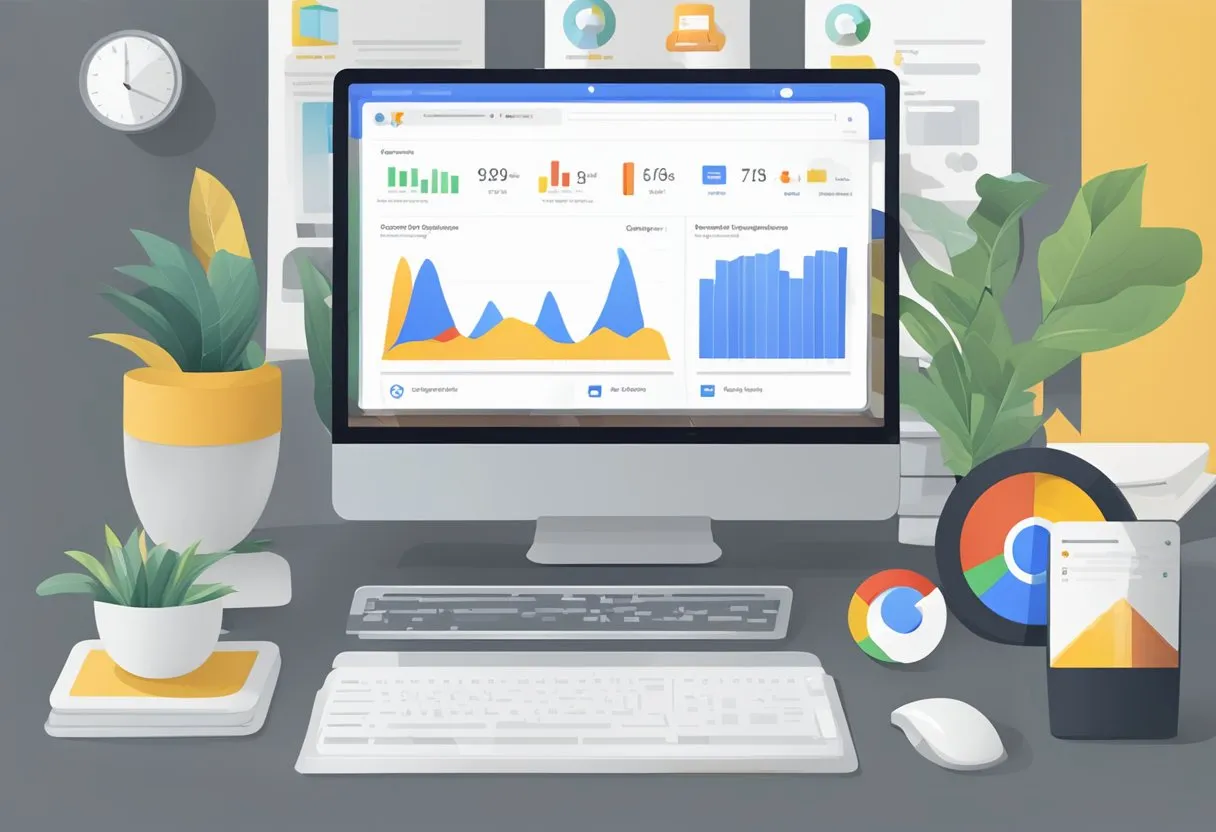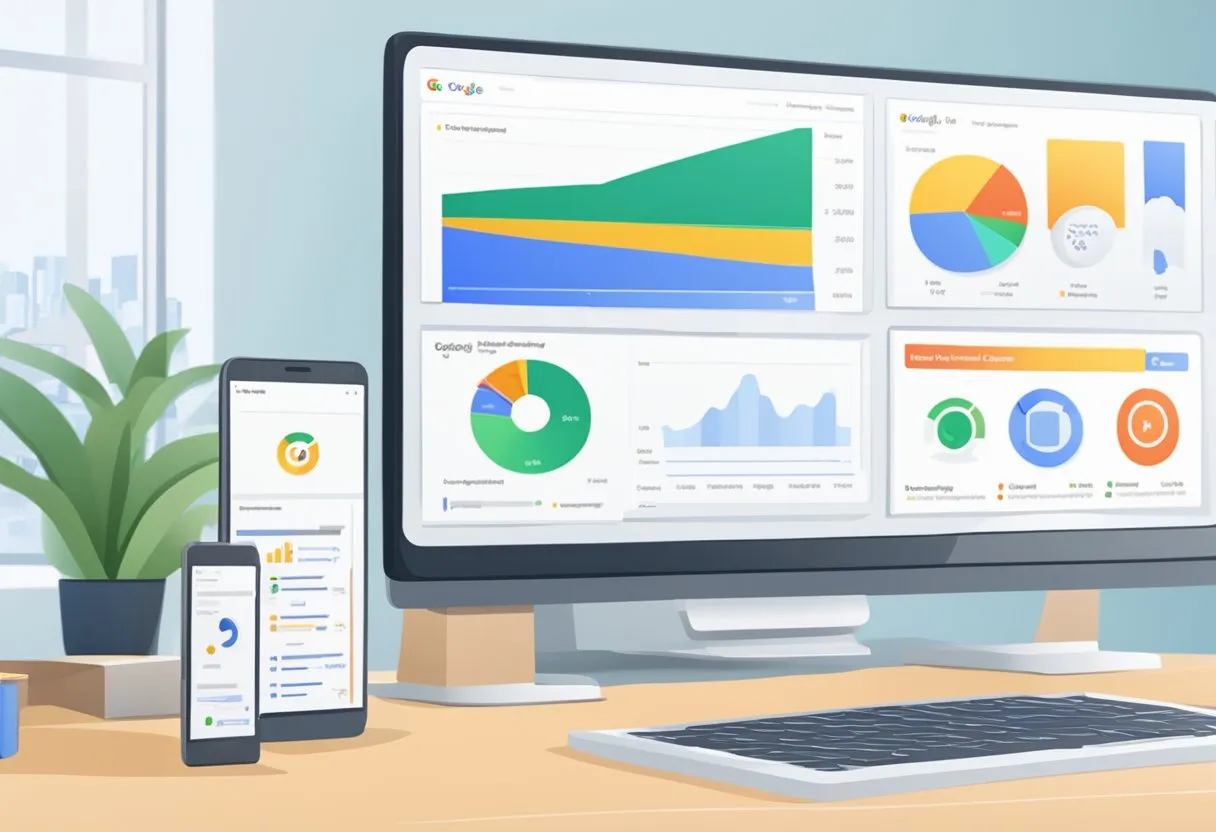Best practices for Google Ads compliance: Essential steps for advertisers
Google Ads is a powerful tool for online advertising, but it comes with rules. Following these rules is key for success. Google Ads policies cover four main areas: prohibited content, prohibited practices, restricted content, and editorial standards. Knowing these policies helps businesses create effective ads that reach their target audience.

Staying up-to-date with Google Ads policies is an ongoing task. The digital landscape changes fast, and so do the rules. Advertisers who keep track of these changes are more likely to see their ads approved and running smoothly. This saves time and money in the long run.
Key Takeaways
- Google Ads has specific policies that all advertisers must follow
- Regular policy updates require ongoing attention from advertisers
- Compliance with Google Ads policies leads to better ad performance and cost-effectiveness
Understanding Google Ads Policy Compliance
Google Ads has rules that advertisers must follow. These rules protect users and keep ads safe. Knowing the policies helps avoid problems and run better ads.
Rules and Regulations for Advertisers
Google sets clear ad policies for all advertisers. These rules cover what can be advertised and how. Ads must be honest and follow local laws. They can’t mislead or offend users.
Key rules include:
- No dangerous products or services
- No fake or counterfeit goods
- No hate speech or discrimination
- Clear info about prices and fees
- Respect for copyrights and trademarks
Advertisers need to review policies often. Google updates rules to match new laws and trends. Following these rules keeps ads running and accounts safe.
Common Policy Violations
Many advertisers break rules by mistake. Knowing common errors helps avoid them. Some frequent violations are:
- Misleading content
- Restricted products (like drugs or weapons)
- Poor landing page experience
- Unclear billing practices
- Misuse of trademarks
Ads that break rules get disapproved. This stops them from showing. Repeated violations can lead to account bans. To stay safe, advertisers should:
- Check all ad text and images
- Ensure landing pages match ad claims
- Get proper certifications for restricted items
- Keep billing clear and honest
Regular ad reviews help catch issues early. This keeps campaigns running smoothly.
Strategies for Effective Ad Campaigns
Creating successful Google Ads campaigns requires careful planning and execution. Focus on clear goals, understand your audience, and use ad extensions to boost performance.
Setting Clear Objectives
Start by defining specific, measurable goals for your campaigns. Decide if you want to increase brand awareness, drive website traffic, or boost sales.
Set realistic targets based on your budget and timeline. For example, aim to increase click-through rates by 10% in 30 days.
Use Google Ads’ built-in tools to track key metrics like impressions, clicks, and conversions. This data helps you measure progress and adjust strategies as needed.
Review and update your objectives regularly. As your business grows, your advertising goals may change. Stay flexible and adapt your campaigns accordingly.
Identifying Target Audiences
Audience segmentation is crucial for ad success. Use Google Analytics 4 to create custom audiences based on user behavior and demographics.
Research your ideal customers’ interests, needs, and online habits. This info helps you craft more relevant ads and choose effective keywords.
Test different audience segments to see which perform best. Start with broad targeting, then narrow down based on results.
Use remarketing to reach people who’ve already interacted with your brand. These warm leads are more likely to convert.
Utilizing Ad Extensions
Ad extensions expand your ads with extra info, making them more useful and eye-catching. They can improve click-through rates at no extra cost.
Try different types of extensions:
- Sitelink extensions: Add links to specific pages on your site
- Call extensions: Display your phone number
- Location extensions: Show your business address
Use callout extensions to highlight unique selling points or special offers. This helps your ads stand out from competitors.
Monitor extension performance regularly. Remove or update those that aren’t driving results.
Optimizing Cost Management

Managing your Google Ads budget wisely can boost your return on investment. Smart spending choices help you get more from your ad dollars.
Budgeting and Bidding Strategies
Set a daily budget that fits your goals. Start small and slowly increase as you learn what works. Use automated bidding to let Google’s AI handle bids for you.
Try different bid strategies like target CPA or target ROAS. These focus on getting conversions at your desired cost. Test manual CPC bidding if you want more control.
Watch your cost per click (CPC) closely. Adjust bids based on keyword performance. Pause or remove keywords that cost too much without results.
Reducing Cost Per Click (CPC)
Improve your Quality Score to lower CPCs. Write relevant ads and choose targeted keywords. A higher score means you can pay less for good ad positions.
Use negative keywords to avoid wasted clicks. This stops your ads from showing for irrelevant searches. Review your search terms report often to find new negatives.
Try less competitive long-tail keywords. They often have lower CPCs and can bring in qualified traffic. Group similar keywords into tight ad groups for better relevance.
Test different ad formats like responsive search ads. They can improve click-through rates, which helps lower your CPC over time.
Enhancing Ad Performance
Good ad performance helps you get more clicks and sales. It also saves money on your Google Ads budget. Let’s look at some key ways to make your ads work better.
Improving Click-Through Rate (CTR)
A high CTR means more people click your ads. To boost CTR, write clear and catchy headlines. Use strong calls to action like “Buy Now” or “Learn More”. Put your main keywords in the ad text.
Make sure your ads match what people are searching for. Use ad extensions to show extra info like phone numbers or links to specific pages. This gives people more reasons to click.
Test different versions of your ads. Try changing the headline or description. Keep the ones that get the most clicks.
Use of Negative Keywords
Negative keywords stop your ads from showing for searches you don’t want. This saves money and improves your CTR. Start by looking at your search terms report. Find words that aren’t a good fit for your business.
Add these as negative keywords. For example, if you sell new cars, add “used” as a negative keyword. This way, your ad won’t show when people search for used cars.
Keep updating your negative keyword list. This helps your ads stay focused on the right audience.
Leveraging Automated Rules
Automated rules in Google Ads can save time and improve performance. Set up rules to change bids based on CTR or conversion rate. For example, increase bids for ads with high CTR.
Use rules to pause low-performing ads or keywords. This keeps your account tidy and efficient. Set up email alerts for important changes in your account.
Start with simple rules and test them. Add more complex rules as you get comfortable. Regular checks help make sure your rules are working well.
Monitoring and Adapting Campaigns

Keeping a close eye on your Google Ads campaigns is key to success. Regular checks and updates help you get the most out of your ads.
Analyzing Campaign Data
Campaign performance tracking is vital for Google Ads success. Look at key metrics like click-through rates, conversion rates, and return on investment.
Use the Google Ads dashboard to check these numbers daily. Pay extra attention to which keywords and ads are doing well.
Set up custom reports to track the data most important to your business. This helps you spot trends and make smart choices.
If you see a drop in performance, act fast. Adjust your bids, pause underperforming ads, or try new keywords.
Importance of A/B Testing
A/B testing is a must for improving your ads. It means running two versions of an ad to see which works better.
Test one element at a time, like the headline or call-to-action. This way, you know exactly what caused any changes in performance.
Give each test enough time to gather solid data. Two weeks is often a good starting point.
Use the results to make your ads stronger. Keep the winner and try new tests to keep improving.
A/B testing helps you learn what your audience likes. This knowledge can boost your conversion rates over time.
Responsive Search Ads
Responsive Search Ads (RSAs) are a smart way to reach more people. They mix and match different headlines and descriptions.
Write at least 8-10 headlines and 3-4 descriptions for each RSA. This gives Google more options to create effective ads.
Use keywords in your headlines and descriptions. This helps your ads show up for relevant searches.
Check the “Ad strength” meter in Google Ads. It tells you how good your RSA is and how to make it better.
Keep an eye on which combinations perform best. Use this info to guide your future ad writing.